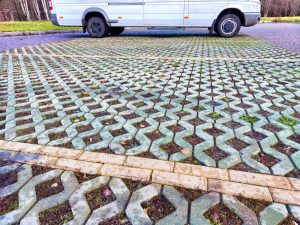Winter has officially arrived. Temperatures are dropping, and frosty weather events have been forecast. Before long, snow plows and salt spreaders will dot the Interstate, as the perennial battle between man and icy pavement picks up once again.
Each and every year, compromised roadways and parking lots lead to countless vehicular accidents. Commercial property owners are responsible for clearing snow and treating icy pavement, making the services of a snow removal company an absolute necessity.
Once again this winter, three distinct tactics will be employed in an effort to facilitate safe passage for both drivers and pedestrians. Though they have each been shown to be highly effective allies in the fight against Jack Frost, they are not without their own side effects.
- Anti-icing agents – Anti-icing chemicals are used to pre-treat surfaces prior to – or at the beginning of – a storm, and can effectively prevent snow and ice from bonding to pavement. These chemicals – such as liquid magnesium chloride, calcium chloride, and sodium chloride – can significantly reduce the amount of salt needed following a winter weather event, making the snow plow’s job that much easier.
- Deicing agents – Deicers lower the temperature at which water freezes, preventing ice from forming, but must initially dissolve into a brine solution to do so. Sodium chloride (rock salt) and calcium chloride are both commonly used to melt ice. Rock salt is often treated with liquids before application to expedite the creation of brine.
Deicers are toxic, however, and calcium chloride, in particular, can lend to the deterioration of concrete and steel, and accelerates vehicular corrosion. Repeated use of rock salt can also result in pits, cracks, and pot holes in cement.
For residential and private use, the following tips are suggested when applying deicers to sidewalks and pathways:
– Clear snow first – do not attempt to melt both snow and ice.
– Don’t overdo it – follow the instructions on the label to the letter.
– Ice melts are an irritant. Protective clothing is advised.
– Do not apply to uncured concrete.
– If overuse is suspected, flush area with water.
- Sand – While it’s not quite the beach blanket party that you might be hoping for, sand – and lots of it – plays a big role in icy pavement While it doesn’t melt ice, it does provide traction – making it safer to walk or drive across slippery surfaces, and proving invaluable when attempting to free a trapped automobile. Biodegradable cat litter can serve the same purpose, and is safe to use around children and pets, as are gravel, wood chips, and straw. Such abrasives, however, can clog inlets and sewers.
Remember: Road salt, sand, and other agents ultimately get washed into storm drains and wind up in the watershed, while their usage also impacts soil and vegetation. They should be used sparingly.
Pro-Pave offers quality snow removal as part of our commercial maintenance services. Our crews are thoroughly knowledgeable of all chemicals used to treat icy pavements, and can do so in a safe and efficient manner. Contact us today to find out more, and get ahead of the weather this year.





